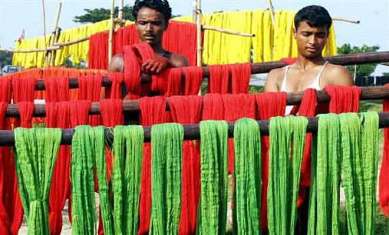Govt may include mechanised processes under handlooms
Proposal marks a change of policy followed since Independence.

In a virtual admission of the futility of funds thrown in year after year for the handlooms sector,the government is set to amend the definition of handloom products with a view to entirely broad-base the scope of the product category to include mechanised operations processes in the manufacture of these items.
This,coming at a time when the handloom sector is faced with an existential crisis despite the monetary support from the government,marks a significant course-correction in the Centres small is beautiful philosophy that has been religiously followed in the textile sector since Independence.
monthly limit of free stories.
with an Express account.
Currently,under the Handlooms (Reservation of Articles for Production) Act,1985,handloom has been defined as any loom other than powerloom.
A proposal moved by the textiles ministry to modify the definition,placed before the government for approval,redefines handloom as any loom,other than powerloom; and includes any hybrid loom on which,at least one process for weaving requires manual intervention or human energy for production. A Cabinet note on the issue is likely soon.
Experience over the years has shown that the numbers of handlooms as well as handloom weavers are declining sharply,and especially the younger generation is not willing to continue or enter into this profession owing to low generation of income and hard labour required to operate looms,a ministry official said.
While the textile industry is changing the world over,including India,handloom weavers are still tediously working hand-operated looms,the official added. A substantial population of weavers are still living in poor conditions.
The new definition is based on the recommendations tabled by the the Advisory Committee on Handloom Reservation Act,1985. This,according to officials,would enable the existing handloom weavers to upgrade their looms without losing out on the benefits available to handloom weavers under various government schemes.
The plethora of schemes run by the Centre for the textile and apparel sector are largely focussed on promoting small-scale units and the handloom and powerloom sectors,instead of integrated mills. As a result,the Indian textile industrys lack of economies of scale and cost competitiveness have emerged as its biggest constraining factor. The textile industry is the biggest employer after agriculture.
At a time when the weakening Chinese stranglehold over global textile markets has enabled Vietnam,Indonesia and Bangladesh to steadily increase their share in key markets such as the US and the EU,Indian suppliers have struggled to keep pace with the competition.
In India,the limited availability of large lots of fabrics,mainly because of the shifting of fabric production from the organised sector to the decentralised sectors,has prevented scaling up of garmenting operations, said DK Nair,secretary-general of the Confederation of Indian Textile Industry,a lobby group for the organised segment of the industry.
While in 1951,over 70 per cent of Indias fabric production was in the organised sector,by 2010,this had declined to 3.3 per cent. Currently,close to 80 per cent of the fabric used by the Indian garment industry comes from the power loom sector.